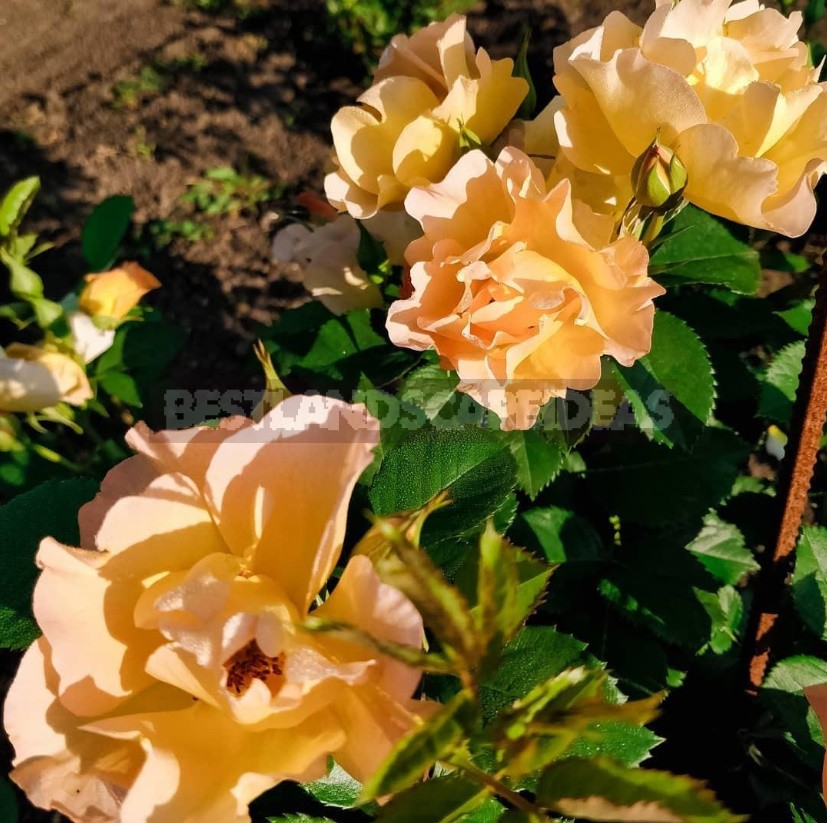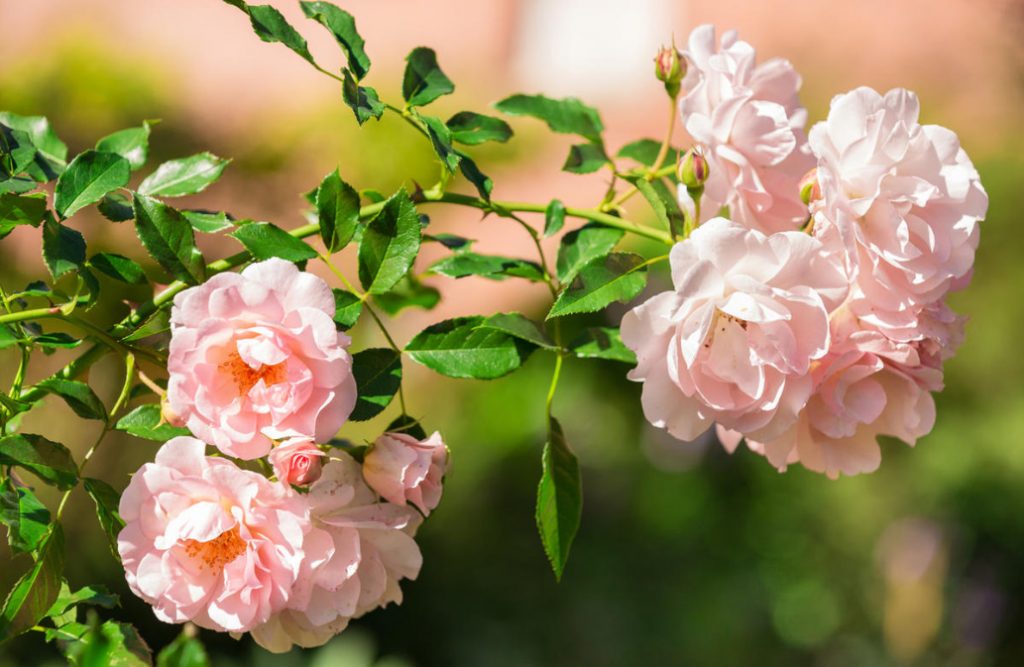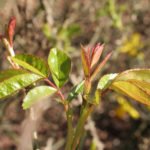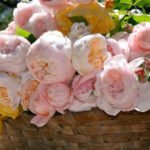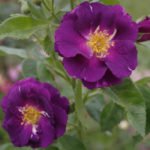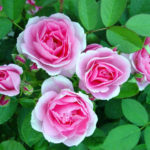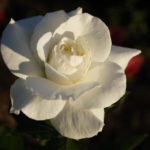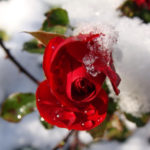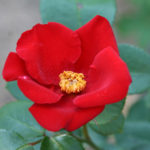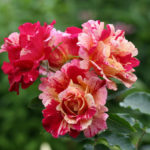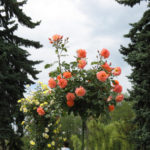Canadian roses are plants from the category “planted and forgotten”. Ideal for beginners — as well as for gardeners who live in regions with frosty winters, and anyone who is tired of” bothering ” with hiding the Queen of the garden and caring for her. Not familiar with them yet? It’s time to fix this!
Little history
The first roses of canadian selection were obtained at the end of the XIX century as a result of complex interspecific hybridization. And in the mid-twentieth century, the government of Canada even funded a special program to breed hardy varieties for parks and public areas. And, although this program has long been discontinued, local breeders continue to create new, more and more decorative varieties that are in demand not only at home, but also on the world market.
The basis for selection were local species, such as Rosa arkansana, R. rugosa. Thanks to this relationship, “Canadians” are distinguished by their endurance and resistance to harsh climatic conditions (for example, they are able to tolerate frosts up to –30 ° C). They winter well, covered with snow, and do not require complex care. The tops of shoots that go beyond the snow cover freeze, but in the spring after pruning quickly recover. And “Canadians” are much less likely than other roses to suffer from black spot and powdery mildew.
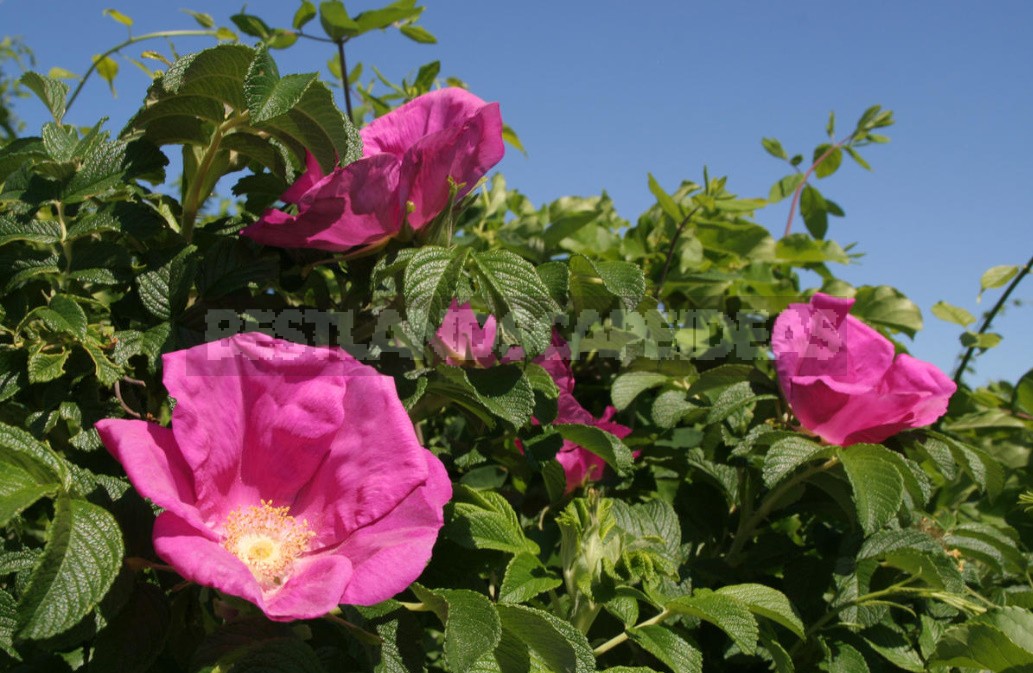
Their decorative “Canadians” are due to the hybrids of Kordes, which were also used for their breeding. With proper care, they bloom from early summer to late autumn — usually very profusely.
Canadian roses
Some gardeners who are not personally familiar with canadian roses, mistakenly believe that this is a type of ordinary rosehip. They are especially confused by the presence of” Canadians ” seven leaves. The fact is that most varietal roses have a complex leaf consisting of five leaves. They are quite large, leathery, glossy. Most “Canadians” have a leaf more like a rose hip: seven leaves instead of five, they are elongated, matte, light green. This is just a genetic feature of this group of varieties inherited from R. rugosa.
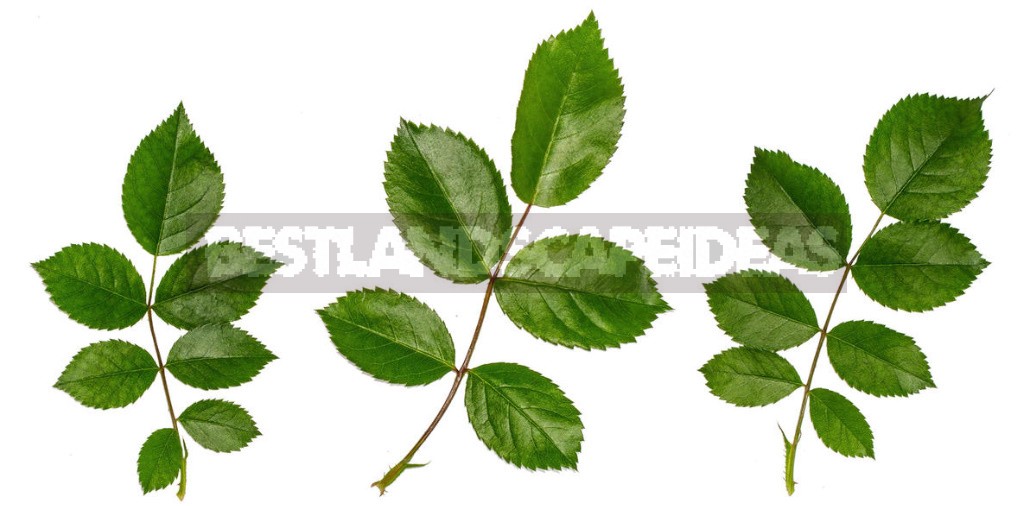
As for the flower itself , no one will argue that “Canadians” are not as elegant as tea-hybrids, not as Terry and fragrant as the legendary Austin Roses , but among them there are many worthy representatives.
The best varieties of canadian roses
It’s time to introduce you to the varieties of canadian roses that have won the well-deserved love and recognition of gardeners. They have been tested in many regions of our country, with a variety of climatic conditions.
Super frost-resistant variety ‘Martin Frobisher’. Winter hardiness zone — 2, which corresponds to a decrease in temperature to -45°C. At the same time, the variety has proven itself in a hot climate. It has almost no spikes. The flowers are thickly macerated, very tender, milky in color with a pink tinge in the center. Blooms continuously all season. Forms an erect shrub about 1.5 m high.
‘Lambert Closse’ from the “Canadians” is the closest with the classic form of tea-hybrid roses. The flowers are usually single, dark pink; over time, starting with the outer petals, gradually fade to pale pink, which looks very impressive when fully opened. Blooms for a long time, until the frost. The Bush is neat, about 80 cm high.
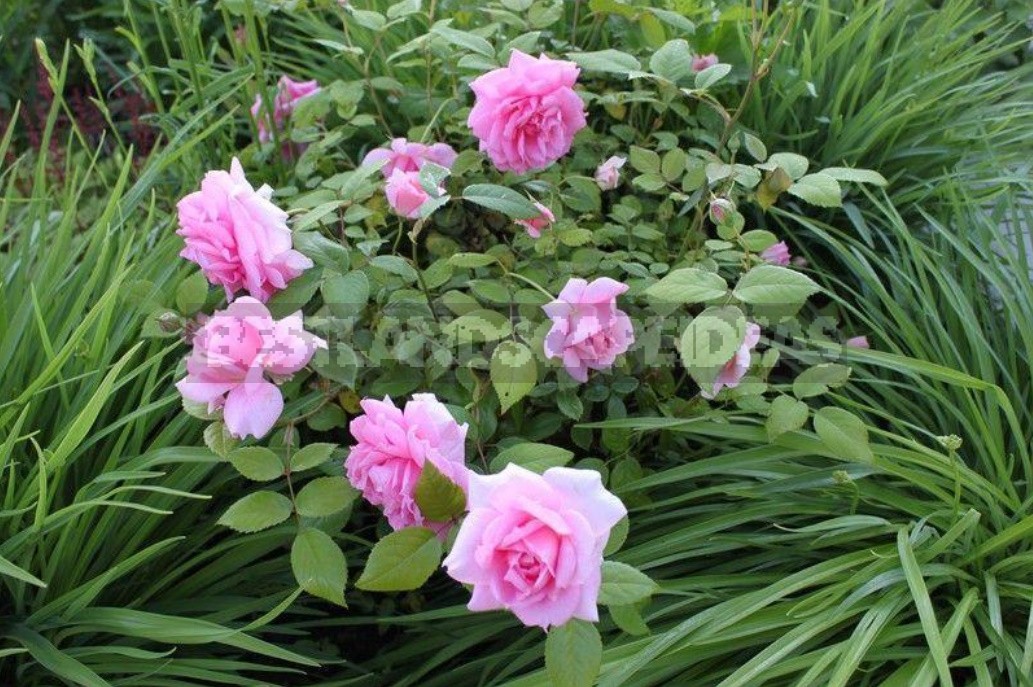
‘Alexander MacKenzie’ — one of the most noble “Canadians”. Flowers of classic shape with bent petals of rich scarlet color surprise with a light aroma of fresh garden strawberries. Blooms in several waves. The Bush is tall, up to 2 m, erect, with slightly drooping branches.
‘Cuthbert Grant’ – a one and a half meter Bush with bright red flowers of beautiful shape, which effectively contrast with the gray-green foliage. Blooms early, blooms in two waves with a noticeable break, and in the second wave, the flowers have a deeper purple hue. Very resistant to diseases and rain.
‘J. P. Connell’ is a wonderful variety with an uncharacteristic yellowish-cream color for the Explorer series. Flowers are beautiful Cup-shaped, Terry. The Bush is erect, the shoots have almost no spikes.
‘Henry Hudson’ – a low spreading shrub, can be used as a groundcover. Very resistant to diseases. Pink buds open into large, almost flat semi-double white flowers with a yellow center, very fragrant. Blooms in early summer. Flowering is abundant, repeated.
Among canadian roses, there are several tall varieties that can be grown as wattle.
‘John Davis’ – a powerful two-meter Bush, blooming profusely with double pink flowers of an ancient form. Blooms quite early, the main flowering lasts about 3 weeks; after which it blooms less profusely, but very long, until late autumn.
‘John Cabot’ – a bright, profusely blooming prickly Bush. It has two waves of flowering — the first enchanting, the second less generous. Flowers of an unusual, interesting shape-flat, pink, gradually fade in the sun; but the variety grows well even with strong shading, without losing its decorativeness. Above the snow level, it can freeze, so the lashes should be bent.
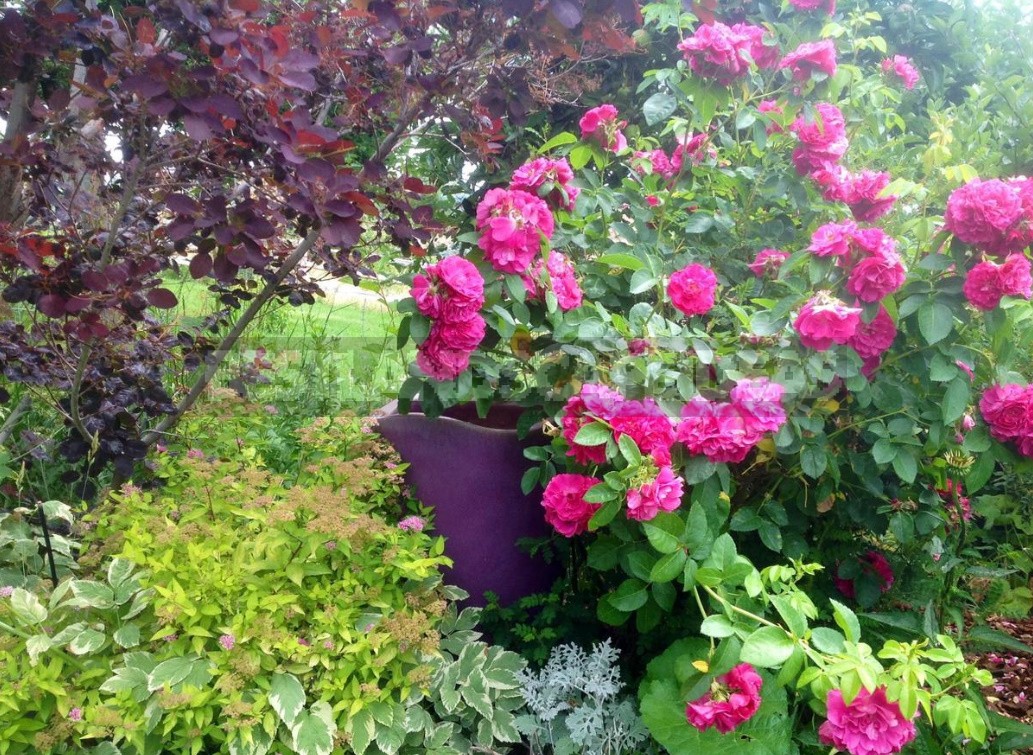
Some gardeners prefer more compact varieties. There are also such canadian roses as ‘Morden Blush’ and ‘Louise Bugnet’. They have a neat form of the Bush and beautiful flowers that resemble the blossoms of the floribunda.
‘Morden Blush’ is a popular Park rose with abundant and long-lasting blooming. Flowers of the most delicate color: rich pink buds open into soft pink flowers of beautiful shape with pearl strokes in the center. The Bush is low, compact, 70-100 cm high.
The Magnificent ‘Louise Bugnet’! The flowers are snow-white, even with a greenish tinge, with a pink-purple border on the edge of some of the petals — very refined and noble. The buds are a rich cherry color, which creates an interesting contrast between the flowers that have not yet opened and those that have already opened. Flowering is abundant, but the flower on the plant does not last long and soon flies around. However, the flowers are constantly replaced with new ones, so the Bush blooms almost all summer. It is 90 cm high and 1.5 m wide.
Of all the variety of canadian roses, the ‘Morden Centennial’ variety is particularly popular. This is one of the best “Canadians”: blooms very profusely all season almost without breaks, rarely gets sick, has a good shape of the Bush. The flowers are rich pink, Terry, with a subtle aroma, collected in a brush. Excellent rose, while very hardy. It grows up to 1 m.
‘Adelaide Hoodless’ quickly grows into a spreading shrub up to 2 m high. At the ends of the shoots up to 15 flowers, under the weight of which the branches bend, so it is advisable to provide support for this rose. Flower brushes are so large and dense that from a distance they resemble elegant bouquets.
The magnificent ‘Prairie Joy’ is distinguished by large thickly-double flowers of an ancient form, from a distance similar to peonies. At first they are bright pink, then the outer petals fade, and a very interesting, delicate color is obtained. Strong bushes with dense healthy foliage and abundant continuous flowering are ideal for hedges.
Canadian roses do not differ in a variety of colors. They mostly have pink, red or white flowers, but there is one exception-the ‘Morden Sunrise’ variety. The name speaks for itself. The flowers are Golden-honey color, in cold weather they turn pink, collected in inflorescences of 4-8 pieces. They have an unobtrusive, but noticeable aroma. The variety is very resistant to diseases.
